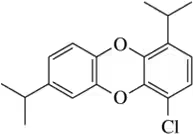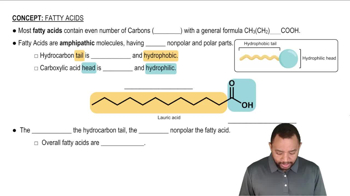Rank the following molecules from least water soluble to most water soluble. Explain your reasoning.
(a) H3C ― OH

 Verified step by step guidance
Verified step by step guidance Verified video answer for a similar problem:
Verified video answer for a similar problem:


 1:47m
1:47mMaster Understanding “like dissolves like”. with a bite sized video explanation from Johnny
Start learning